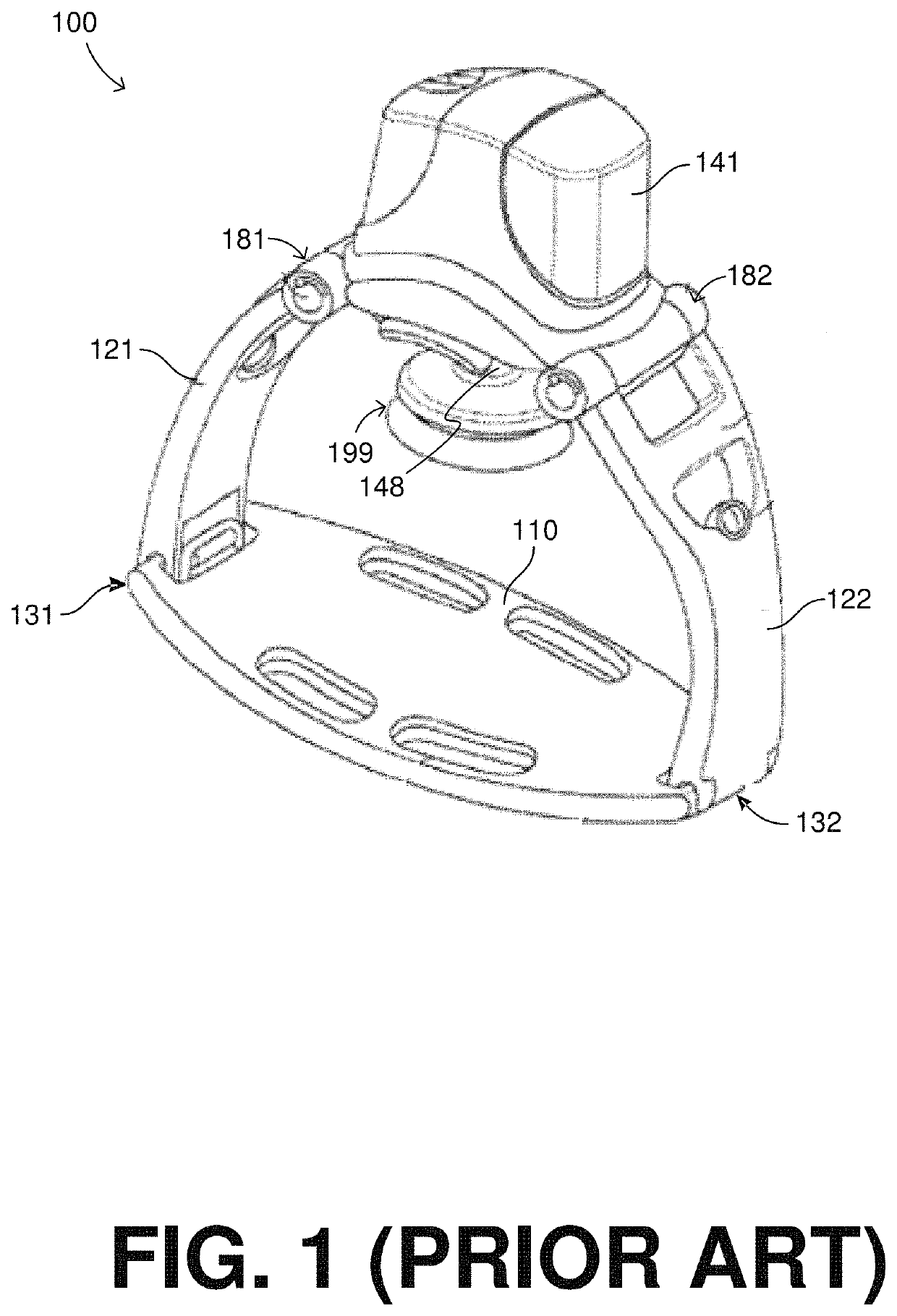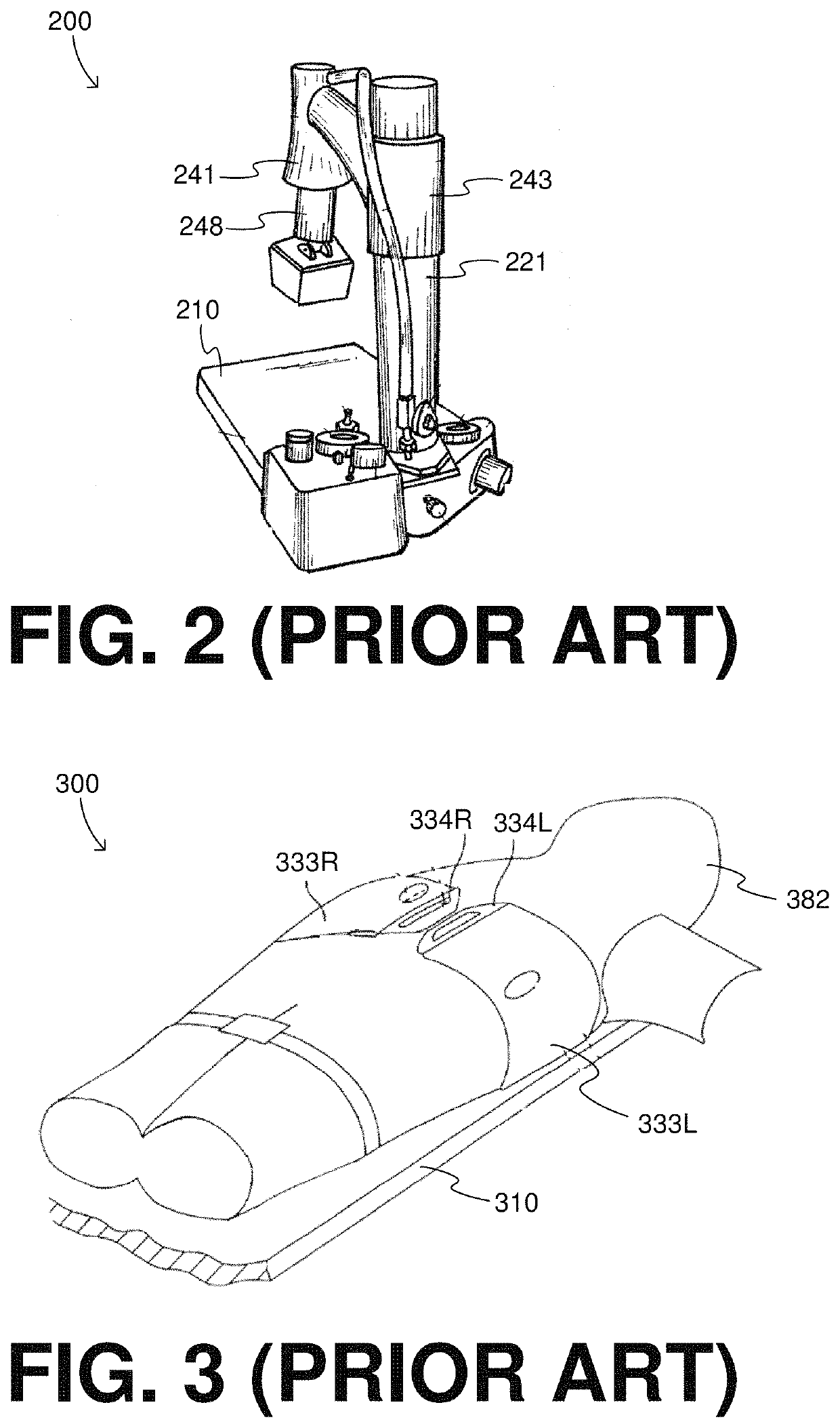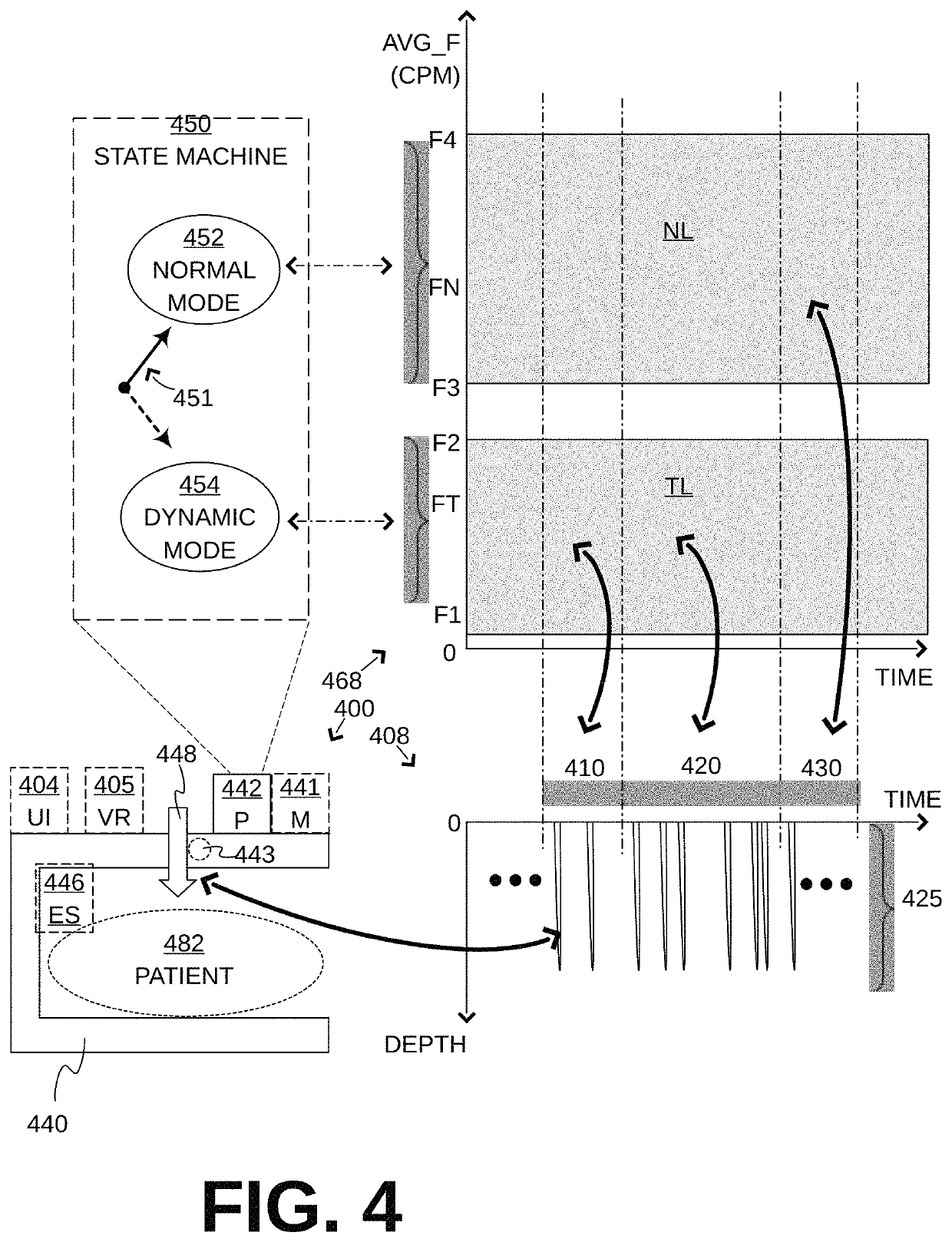CPR chest compression system with dynamic parameters based on physiological feedback
a chest compression and dynamic parameter technology, applied in the field of cpr chest compression system with dynamic parameters based on physiological feedback, can solve the problems of patient soon dying, brain damage, and ineffective manual cpr,
- Summary
- Abstract
- Description
- Claims
- Application Information
AI Technical Summary
Benefits of technology
Problems solved by technology
Method used
Image
Examples
Embodiment Construction
[0045]Briefly described, the present disclosure is directed at embodiments of a mechanical Cardio-Pulmonary Resuscitation (CPR) system that includes mechanisms for dynamically altering CPR compression parameters based on physiological characteristics of the patient.
[0046]The disclosed embodiments pertain to CPR systems that are usable by a rescuer to care for a patient. One such system, shown in FIG. 1, is offered and sold by Physio-Control, Inc. under the trademark Lucas®.
[0047]A CPR system 100 includes components that form a retention structure. The components include a central member 141, a first leg 121, a second leg 122 and a back plate 110. Central member 141 is coupled with first leg 121 and second leg 122 using joints 181, 182, such that first leg 121 and second leg 122 can be partly rotated around joints 181, 182 with respect to central member 141. This rotation can help minimize the overall volume of CPR system 100, for easier storage at times when it is not used. In addit...
PUM
 Login to View More
Login to View More Abstract
Description
Claims
Application Information
 Login to View More
Login to View More - R&D
- Intellectual Property
- Life Sciences
- Materials
- Tech Scout
- Unparalleled Data Quality
- Higher Quality Content
- 60% Fewer Hallucinations
Browse by: Latest US Patents, China's latest patents, Technical Efficacy Thesaurus, Application Domain, Technology Topic, Popular Technical Reports.
© 2025 PatSnap. All rights reserved.Legal|Privacy policy|Modern Slavery Act Transparency Statement|Sitemap|About US| Contact US: help@patsnap.com



